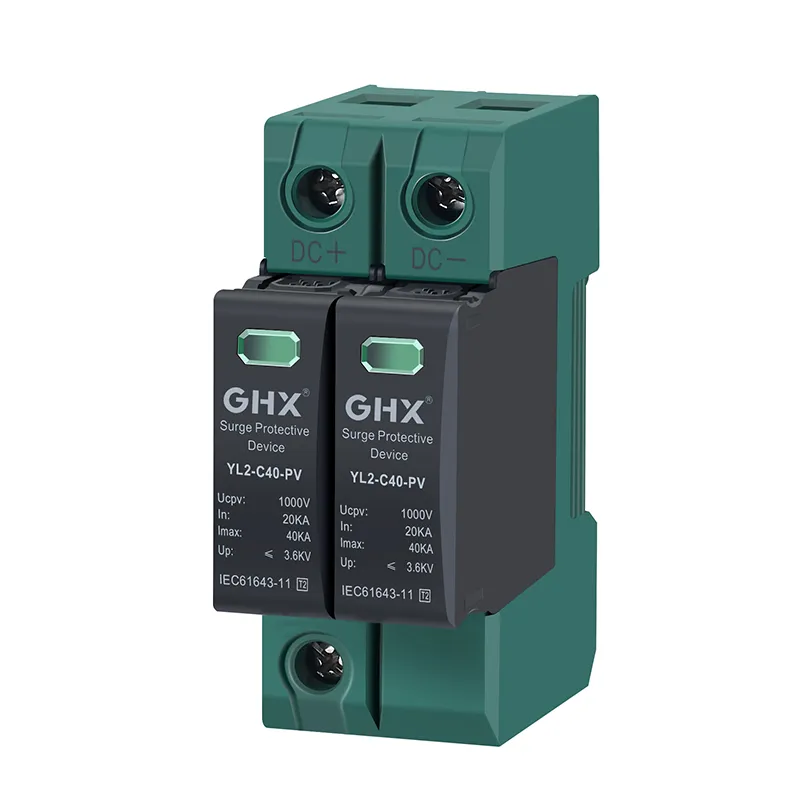The Growing Importance of DC Surge Protective Devices in the Age of Renewable Energy
2024-08-27
As the world continues to embrace renewable energy, the demand for efficient and reliable power systems is on the rise. Solar panels, wind turbines, and battery storage systems are becoming increasingly common, all of which rely on DC power. With this shift, the importance of DC Surge Protective Devices (SPDs) has never been more critical. In this blog, we will explore the role of DC SPDs in renewable energy systems and why they are essential for maintaining efficiency and safety.

The Rise of DC Power in Renewable Energy
Renewable energy systems, particularly solar and wind power, predominantly use DC (direct current) for power generation and storage. Solar panels generate DC electricity, which is either used directly, stored in batteries, or converted to AC for household and grid use. Similarly, wind turbines can produce DC power, which is then converted for various applications.
With this increased reliance on DC power, the need for protection against surges becomes crucial. Surges can occur due to lightning strikes, grid faults, or switching operations, posing a significant threat to the integrity and efficiency of renewable energy systems.
Why DC Surge Protection is Critical
1. Protecting Investment: Renewable energy systems represent a significant financial investment. Solar panels, inverters, and battery storage systems are costly components. Surge protection helps to safeguard this investment by preventing damage that could lead to expensive repairs or replacements.
2. Ensuring Energy Efficiency: Surges can degrade the performance of power generation and storage equipment over time. By protecting these systems with DC SPDs, their efficiency is maintained, ensuring maximum energy production and storage capacity.
3. Minimizing Downtime: Downtime in renewable energy systems can lead to lost revenue, especially for commercial and industrial installations. DC SPDs help to ensure continuous operation by protecting against unexpected power surges that could take systems offline.
4. Safety Concerns: High voltage surges pose safety risks, including the potential for fires and electrical hazards. By diverting and grounding excess voltage, DC SPDs help to maintain a safe operating environment for both personnel and equipment.
Types of DC Surge Protective Devices
- Type 1 SPDs: Installed at the point of connection between the external power supply and the building's internal wiring, providing protection against direct lightning strikes and surges.
- Type 2 SPDs: Used within the building’s distribution system, protecting against residual surges that may have passed through Type 1 protection.
- Type 3 SPDs: Installed near sensitive equipment, providing additional protection against lower-level surges.
Application of DC SPDs in Renewable Energy
- Solar Power Systems: DC SPDs are installed to protect solar panels, inverters, and battery storage units from surges caused by lightning strikes or faults in the power grid.
- Wind Power Systems: Wind turbines, which are often installed in exposed locations, are susceptible to lightning strikes. DC SPDs help to protect the turbine’s electrical systems and connected storage solutions.
- Electric Vehicle Charging Stations: With the rise of electric vehicles, charging stations are becoming more common. DC SPDs protect these stations from surges, ensuring reliable operation.
Conclusion
As renewable energy systems continue to grow in importance and prevalence, the need for effective surge protection becomes ever more critical. DC Surge Protective Devices provide essential protection for DC-powered systems, ensuring the longevity, efficiency, and safety of renewable energy installations. By investing in DC SPDs, businesses and homeowners can protect their assets, maintain energy production, and contribute to a safer, more reliable energy future.


